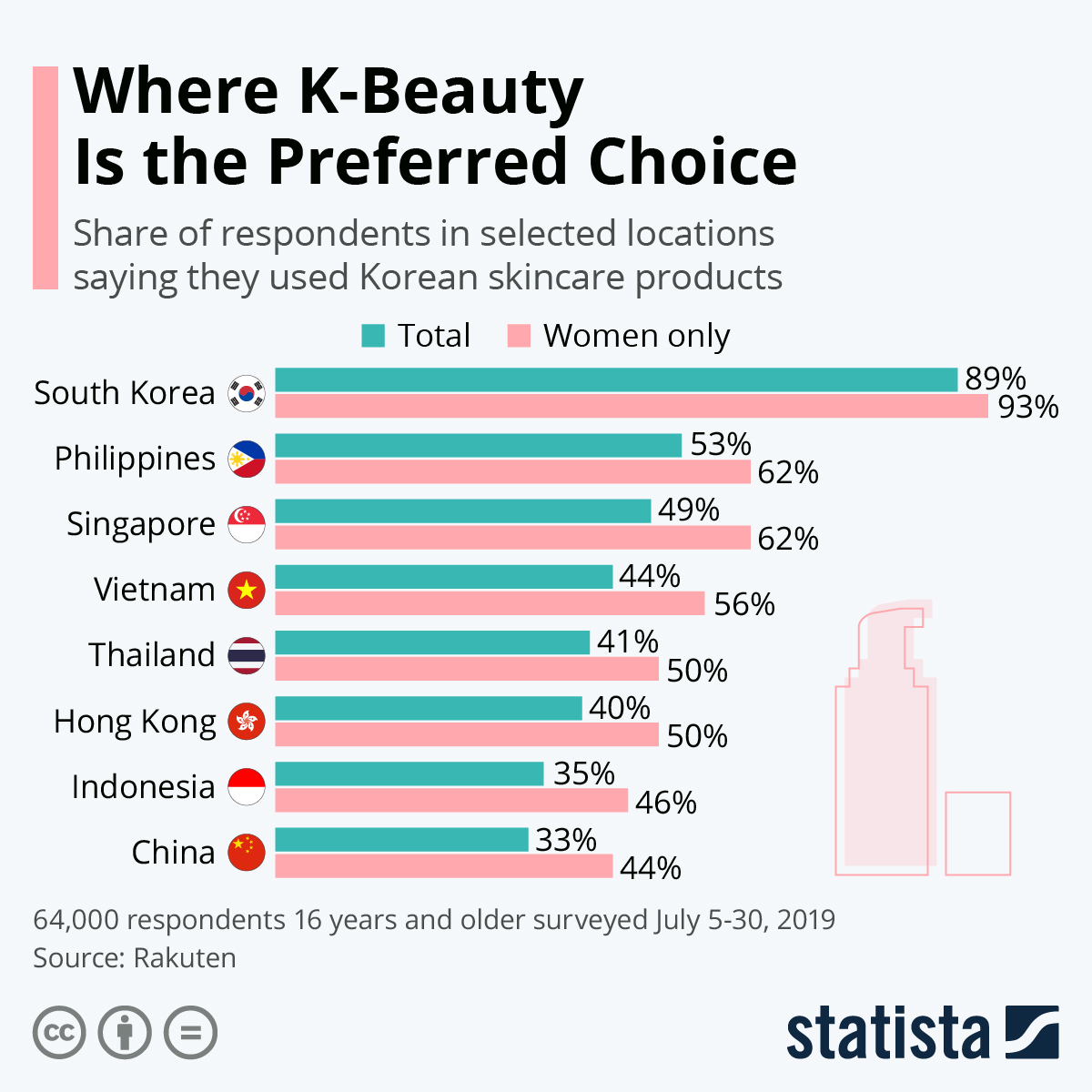Move over, K-Pop, the new export hit from Korean is called K-Beauty. Korean beauty and skincare products have a large following in Asia and beyond. The nation using the most Korean skincare is – of course – South Korea itself, but the Philippines and Singapore are not far behind, as market research from Rakuten shows.
Korean skincare has become associated with so-called skincare routines, which created a loyal following of beauty enthusiasts for Korean beauty brands. Korean products are more frequently used than Japanese ones in most Asian markets, despite Japan being home to global household names like Shiseido. In China, Taiwan and Hong Kong, Japanese brands are still more popular, and the K-Beauty industry also had to grapple with some home-grown competition catering specifically to local tastes.
In the age of the beauty blogger, influencer marketing has been an important force for K-Beauty. According to Rakuten, beauty influencers are among the most common sources for info on Korean beauty trends and products. This was most pronounced among women in the Philippines (54 percent get their info about K-Beauty from influencers) and Thailand (52 percent). In Vietnam, Singapore and Malaysia – as well as in South Korea itself – K-Beauty was most often recommended through friends and family while Indian female consumers relied on info on e-commerce platforms most.





















